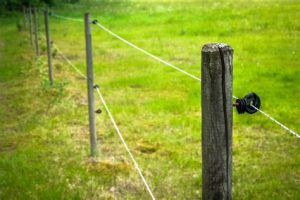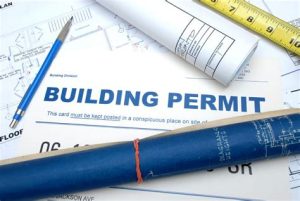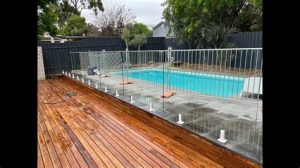Explore how to select the perfect fence style and materials for your landscape while combining privacy and aesthetics with greenery and decorative elements.When it comes to enhancing your outdoor space, a well-designed fence can be more than just a boundary; it can become a stunning focal point. Incorporating landscape design with your new fence not only elevates your home’s curb appeal but also creates a harmonious environment that merges function with beauty. In this blog post, we will explore key elements to consider, starting with how to choose the right fence style that complements your landscape, and matching fence materials for a cohesive look. We’ll delve into techniques to create a seamless transition between your yard and the fence, as well as ideas for adding greenery and decorative elements to enrich the space. Finally, we’ll discuss how to combine privacy with aesthetics, ensuring that your outdoor retreat is both beautiful and secure. Join us as we transform your fencing project into a landscape masterpiece!
Choosing the Right Fence Style
When it comes to adding a fence to your property, selecting the right fence style is crucial for both functionality and aesthetics. Your fence serves multiple purposes, such as privacy, security, and enhancing the overall landscape design.
- Picket Fences: Ideal for a classic look, picket fences are often low and provide a welcoming feel for front yards.
- Privacy Fences: Typically taller, these fences keep your backyard secluded and are often made of wood or vinyl.
- Chain Link Fences: A practical choice for security, they are sturdy and durable while being budget-friendly.
- Split Rail Fences: These rustic fences make a beautiful addition to rural properties and allow for visibility while containing animals.
- Modern Designs: For contemporary homes, sleek horizontal panels or glass fences can create a stunning visual impact.
Considerations such as your home’s architectural style, local regulations, and your personal taste will play a significant role in your choice. For instance, a modern home might look stunning with a sleek metal fence, while a cottage-style home may benefit from the charm of a picket fence.
Additionally, take into account the materials you want to use. Options range from traditional wood to low-maintenance vinyl or even wrought iron, each offering distinct advantages. Durability and maintenance should also be factored in when making your choice.
Ultimately, the right fence style can significantly enhance your property’s appearance while fulfilling your specific needs. Whether you seek security, privacy, or simply an aesthetic appeal, choosing wisely will create a lasting impact on your landscape.
Matching Fence Material to Landscape
When it comes to enhancing the beauty of your outdoor spaces, the choice of fence material plays a crucial role. Matching the fence material to the landscape not only complements your property but also ensures longevity and functionality. There are various materials available, and each offers different aesthetic qualities that can either harmonize or clash with your surrounding environment.
For example, if your landscape features a rustic, wooded area, opting for a wooden fence can create a natural look that fits seamlessly into the surroundings. Alternatively, a vinyl fence might be more suitable for a modern garden, providing a sleek and contemporary feel.
| Fence Material | Best Suited Landscape |
|---|---|
| Wood | Natural woods, gardens, and rustic settings |
| Vinyl | Modern landscapes and low-maintenance yards |
| Aluminum | Stylish properties with manicured lawns |
| Chain Link | Spacious, functional spaces like parks |
It’s important to also consider the color and texture of the materials when matching the fence material to your landscape. A dark-finished fence may look stunning in a bright garden, offering a beautiful contrast, while earthy tones would enhance the natural look in a landscape rich with greens and browns.
Creating a Seamless Transition
When designing your outdoor space, creating a seamless transition between your fence and landscape is crucial for achieving visual harmony. A well-integrated fence not only adds security but also enhances the overall appeal of your garden or yard.
- Height of the fence: Ensure that the fence height complements the surrounding plants and structures.
- Materials: Choose fence materials that blend well with existing architectural styles and landscape elements.
- Color Palette: Select colors that harmonize with your garden’s aesthetic while also standing out as a feature.
Moreover, you can enhance the transition by incorporating decorative elements such as trellises, climbing plants, or artistic paneling that creates a visual connection between the fence and adjoining landscapes.
Adding Greenery and Decorative Elements
When installing a new fence, it’s essential to consider how it complements your overall landscape design. One effective way to enhance the aesthetics of your fence is by adding greenery and decorative elements. These additions can transform a standard fence into a stunning feature that harmonizes with your home’s outdoor environment.
Incorporating plants such as climbing vines can make your fence an attractive focal point. Plants like wisteria, clematis, or ivy can cascade beautifully, softening the fence lines and integrating the structure into the landscape. This approach not only beautifies your fence but also provides additional privacy, creating a more intimate outdoor space.
Moreover, using decorative elements such as hanging pots, artwork, or wall planters can further enhance your fence’s visual appeal. Utilizing these elements, you can create a unique style that reflects your personality. Whether you opt for colorful flowers, succulents, or even fairy lights, these decorative touches will create a warm and inviting atmosphere.
Combining Privacy and Aesthetics
When it comes to designing your outdoor space, finding the right balance between privacy and aesthetic appeal is crucial. A well-designed fence can serve as a functional element that offers protection from prying eyes while enhancing the overall beauty of your landscape. By carefully considering your fence options, you can create a harmonious setting that caters to both your need for seclusion and your desire for style.
One effective way to achieve privacy is by selecting taller fence styles, such as solid wood or vinyl options. These materials can be customized in various colors and finishes to match your home’s exterior, adding a personal touch to your landscape. In contrast, if you prefer a more open feel, lattice-top fences can provide privacy without completely closing off your outdoor area. By incorporating climbing plants, you can further soften the look while enhancing aesthetic value.
Don’t forget to consider the materials of your fence in relation to your overall landscape. For instance, a natural wood fence may complement a garden filled with vibrant flowers, while a sleek metal or composite fence could align well with a modern or minimalist design. Creating this synergy between your fence choice and your landscape will not only increase your home’s curb appeal but also ensure that your outdoor space remains a personal haven.
Frequently Asked Questions
What are the benefits of incorporating landscape design with a new fence?
Incorporating landscape design with a new fence can enhance the overall aesthetic appeal of your property, provide added privacy and security, and improve property value. It also allows for creative expressions, blending natural elements with structural features.
How can I choose the right plants to complement my new fence?
To choose the right plants, consider the color, texture, and height of the plants in relation to your fence. Opt for plants that either contrast beautifully or create a harmonious blend. Native plants can also be an excellent choice for easy maintenance.
What types of fences work best with landscape design?
Wood, vinyl, and wrought iron fences often work well with landscape design. Wood can provide a natural look that complements plants, while vinyl offers versatility and easier maintenance. Wrought iron can add elegance, allowing views of the landscape beyond.
Should I consider lighting in my landscape design with a new fence?
Yes, incorporating lighting can enhance both the fence and the landscape at night. Properly placed lights can highlight key features, create ambiance, and improve safety.
How can I maintain a cohesive look between my fence and landscape?
To maintain a cohesive look, select color schemes and design styles that complement each other. Match the materials of the fence with similar textures in the landscape, and use plants that mirror the fence’s colors or shapes.
Is it important to consider the height of the fence in relation to landscape design?
Absolutely. The height of the fence can affect visual impact and privacy. Taller fences may overshadow small plants, while shorter fences can be complemented by taller plants. Consider how both elements interact to create balance.
What are some tips for planning my landscape design around a fence installation?
Start by mapping out the area and visualizing how the fence will look with existing landscape elements. Consider the purpose of the fence—privacy, decoration, or security—and choose complementary plants and features to accentuate it.




